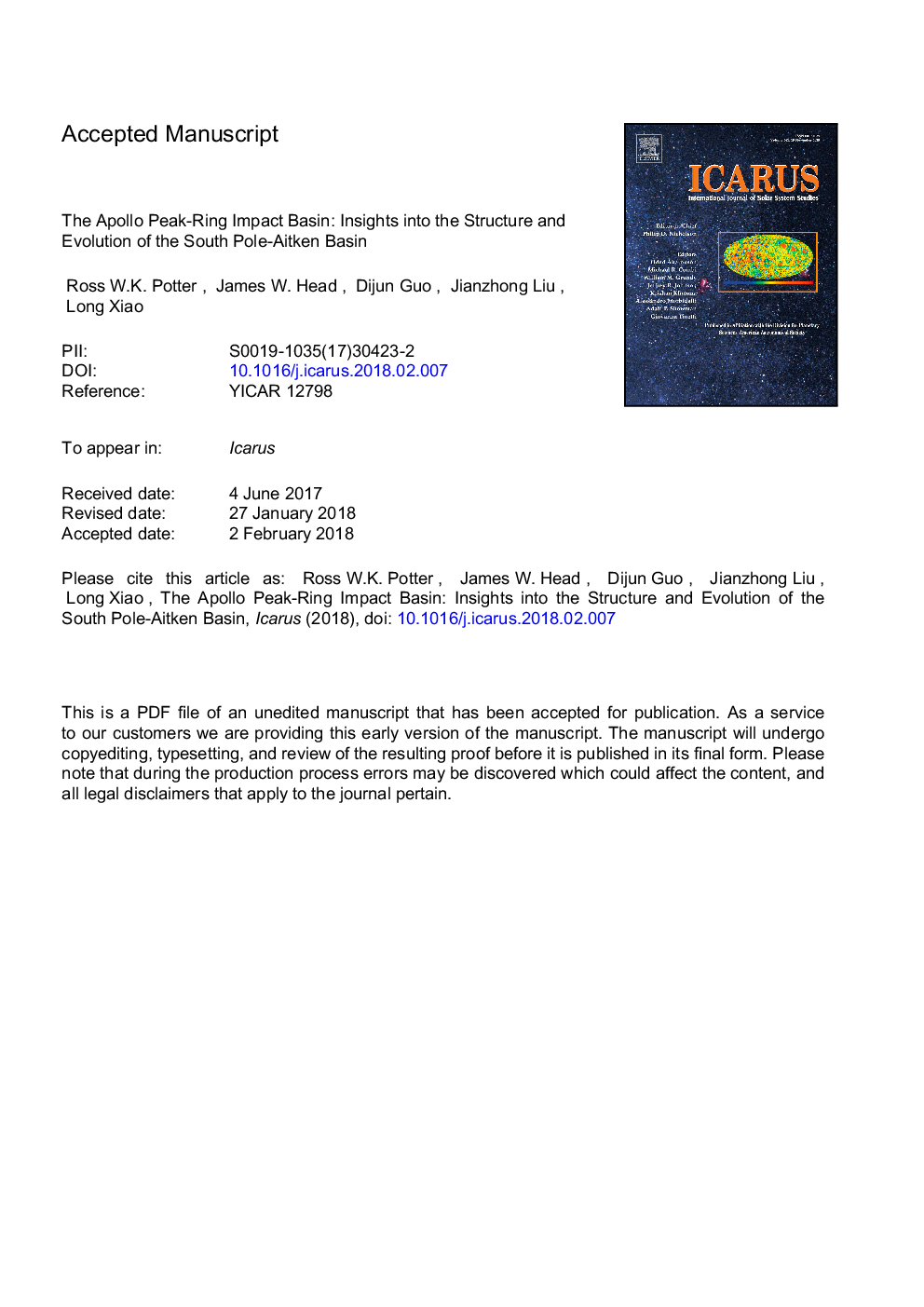| Article ID | Journal | Published Year | Pages | File Type |
|---|---|---|---|---|
| 8134276 | Icarus | 2018 | 39 Pages |
Abstract
The 492â¯km-diameter Apollo impact basin post-dates, and is located at the inner edge of, the â¼2240â¯km-diameter South Pole-Aitken (SPA) basin, providing an opportunity to assess the SPA substructure and lateral heterogeneity. Gravity Recovery and Interior Laboratory gravity data suggest an average crustal thickness on the floor of SPA of â¼20â¯km and within the Apollo basin of â¼5â¯km, yet remote sensing data reveal no conclusive evidence for the presence of exposed mantle material. We use the iSALE shock physics code to model the formation of the Apollo basin and find that the observational data are best fit by the impact of a 40â¯km diameter body traveling at 15â¯km/s into 20-40â¯km thick crustal material. These results strongly suggest that the Apollo impact occurred on ejecta deposits and collapsed crustal material of the SPA basin and could help place constraints on the location, size and geometry of the SPA transient cavity. The peak ring in the interior of Apollo basin is plausibly interpreted to be composed of inwardly collapsed lower crustal material that experienced peak shock pressures in excess of 35â¯GPa, consistent with remote sensing observations that suggest shocked plagioclase. Proposed robotic and/or human missions to SPA and Apollo would present an excellent opportunity to test the predictions of this work and address many scientific questions about SPA basin evolution and structure.
Related Topics
Physical Sciences and Engineering
Earth and Planetary Sciences
Space and Planetary Science
Authors
Ross W.K. Potter, James W. Head, Guo Dijun, Liu Jianzhong, Xiao Long,
